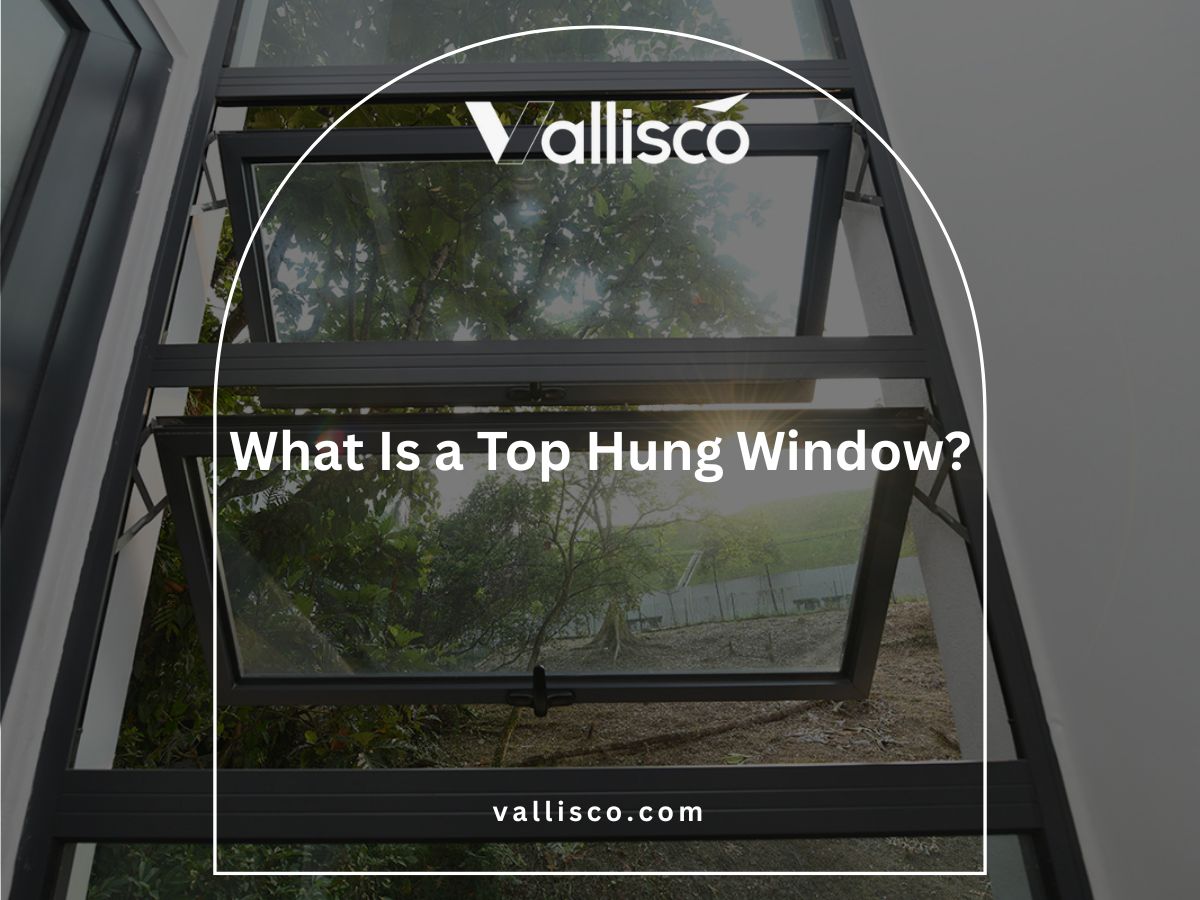I remember a factory manager telling me they had to tape shut three of their breakroom windows just to stop the cold air from flooding in.
They thought the problem was with the HVAC. It wasn’t. Poor window seals were letting all the heat escape.
That kind of situation is more common than you’d think, and it’s why so many businesses turn to us when they can’t afford guesswork.
As commercial-grade door and window manufacturers, we’ve seen how small window issues can turn into big operational problems.
In this article, we’ll outline typical commercial window issues, what causes them, and how to fix or prevent them. Whether it’s drafty air, sticking frames, or fog between panes, we’ll help you sort it out quickly.
These aren’t just cosmetic problems—they eat into your bottom line.
So let’s jump in!
Quick Comparison Table
Here’s a simple table you can drop right into your article. It summarizes the 8 most common commercial window problems, their signs, and fixes in a compact way. This gives you a quick reference before you dive into the detailed explanations.
| Issue | Main Cause | Key Signs | Risks | Quick Fix | Long-Term Solution |
| Foggy/Cloudy Glass | Seal failure in IGU | Hazy look, trapped condensation | Energy loss, poor visibility | Replace IGU | Upgrade to new insulated glass system |
| Drafty Windows | Worn seals or poor caulking | Air leaks, rattling in wind | Higher HVAC costs, discomfort | Re-caulk or replace weatherstripping | Install energy-efficient windows |
| Cracked/Shattered Glass | Impact or thermal stress | Visible cracks, starburst patterns | Safety & security hazard | Replace damaged pane | Use tempered/laminated glass |
| Won’t Open/Close | Frame warping or hardware issues | Sticking, uneven sash, won’t lock | Security risks, poor ventilation | Realign & lubricate | Replace warped frames or hardware |
| Water Leakage | Failed seals, clogged drainage | Stains, puddles, musty smell | Mold, interior damage | Reseal & clear weep holes | Install flashing or replace frames |
| Excessive Noise | Thin or poorly sealed glass | Street noise, vibrating frames | Reduced productivity, poor comfort | Seal air gaps | Install acoustic/laminated glass |
| Mold & Mildew | Persistent condensation, leaks | Musty odor, visible spots | Health risks, compliance issues | Clean & improve ventilation | Upgrade to thermal-break windows |
| Hardware Malfunctions | Worn locks, cranks, handles | Loose latches, sticking cranks | Security breach, safety issues | Replace hardware | Use heavy-duty, tamper-resistant parts |
1. Foggy or Cloudy Glass (Seal Failure)
I once visited a client’s commercial space where nearly every double-pane window on the second floor looked like it had a built-in smoke filter. Their team thought it was dirt between the panes. But once I got a closer look, I knew it was seal failure—something we see often in older window units or poorly installed ones.
Signs You’re Dealing With Seal Failure
- Cloudy or Hazy Appearance Between Panes: If it looks like the glass has fog trapped inside and cleaning doesn’t help, it’s likely a broken seal. This haze stays regardless of temperature or humidity outside. It tends to worsen over time as more moisture seeps in.
- Water Droplets or Condensation Trapped Inside: You might see beads of water or mineral deposits forming between the panes. This often signals long-term moisture intrusion. Once visible, the seal is already fully compromised.
- Glass Feels Colder Than It Should: If the window feels extra cold compared to others, the insulating gas has probably leaked out. That means the unit no longer blocks outside temperatures effectively. This can directly impact your building’s energy costs and comfort levels.
How to Fix or Prevent the Problem
- Replace the Insulated Glass Unit (IGU): You can keep the original frame and just swap out the failed glass panel, which keeps costs lower. This method restores insulation without changing the entire window. It’s a quick solution when the surrounding structure is still solid.
- Upgrade the Full Window System: If multiple windows have failed or your energy bills are climbing, full replacement might make more sense long-term. Newer systems offer better insulation and more durable seals. You also reduce the risk of repeat problems down the road.
- Hire Commercial-Grade Window Experts: Residential fixes won’t cut it here. We use materials rated for business environments and heavy-duty use. That includes advanced spacers, stronger sealants, and proper glazing techniques.
- Prevent Future Issues With Smart Installation: Make sure installers use the right sealants and allow for expansion movement in the frame. Poor installation is one of the top causes of premature seal failure. Even high-end glass won’t last if it’s installed wrong.
- Plan for Phased Replacements if Needed: We often help clients replace sections over time to spread out investment without sacrificing performance. This lets you prioritize the worst windows first. It’s a practical way to stay within budget while upgrading your facility.
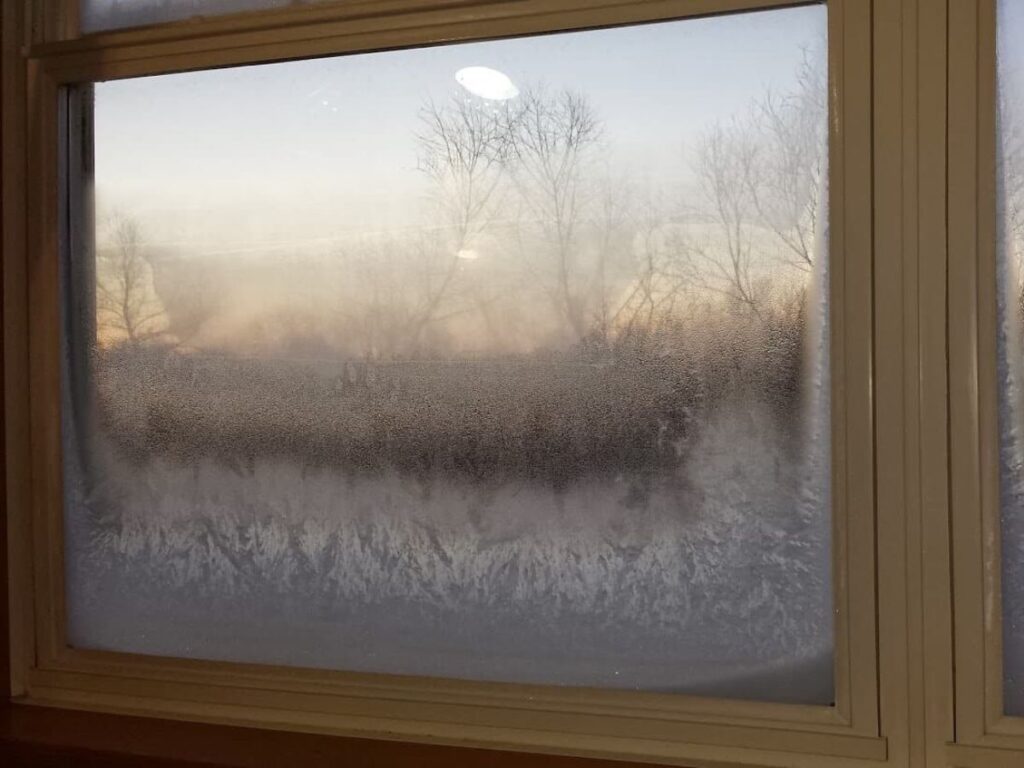
2. Drafty Windows and Air Leaks
We once worked with a logistics company whose warehouse staff kept complaining about the “phantom cold spots” near the main office windows. The HVAC system had been inspected twice, but the real issue was poor weatherstripping around several commercial-grade units.
When windows leak air, it’s not just an employee comfort problem. It directly impacts heating, cooling, and even your indoor air quality.
Signs You’re Dealing With Drafty Windows
- Noticeable Air Movement Near the Frame: If you feel a breeze when you walk past the window—even when it’s closed—that’s a clear sign of a gap. These leaks are often worse in older aluminum frames. It means conditioned air is escaping and outside air is seeping in.
- Temperature Fluctuations Around the Window Area: If one side of a room feels colder or hotter than the rest, windows may be the culprit. You’ll notice this especially near seating areas, corners, or desks. Over time, it throws off your thermostat readings.
- Increased HVAC Usage Without Obvious Cause: If your energy bills are climbing and your system runs more than usual, check the windows. Drafts force heating and cooling systems to work harder to maintain indoor temperatures. It’s a silent cost that adds up quickly.
- Rattling or Whistling Sounds in Windy Weather: Gaps in the frame can create vibrations and sound channels during storms or gusts. That’s often a sign of a loose sash or poorly sealed perimeter. Don’t ignore this—it usually means structural integrity is already compromised.
How to Fix or Prevent the Problem
- Inspect and Replace Weatherstripping: Old or worn-out weather seals are a leading cause of air leaks. Replacing them is a fast and cost-effective solution. We recommend using commercial-grade EPDM or silicone materials for longer performance.
- Re-Caulk the Window Perimeter: Gaps around the frame can often be sealed with fresh caulk. Make sure you’re using exterior-grade, flexible sealants rated for commercial applications. A proper seal can last years if done right.
- Check and Realign Window Sashes: Sometimes, sashes shift out of square due to building settling or frame warping. When they don’t close flush, air will find its way through. Realigning or adjusting the hardware can restore a tight seal.
- Upgrade to Energy-Efficient Window Systems: If leaks are widespread or you’re dealing with outdated aluminum frames, consider a full upgrade. New systems come with thermal breaks, better seals, and improved air infiltration ratings. They pay for themselves in utility savings.
- Perform Regular Maintenance Checks: Include windows in your quarterly facility inspections. Catching small gaps or deteriorating seals early prevents larger repair bills. We often train facility teams on what to look for so they can act before comfort complaints roll in.
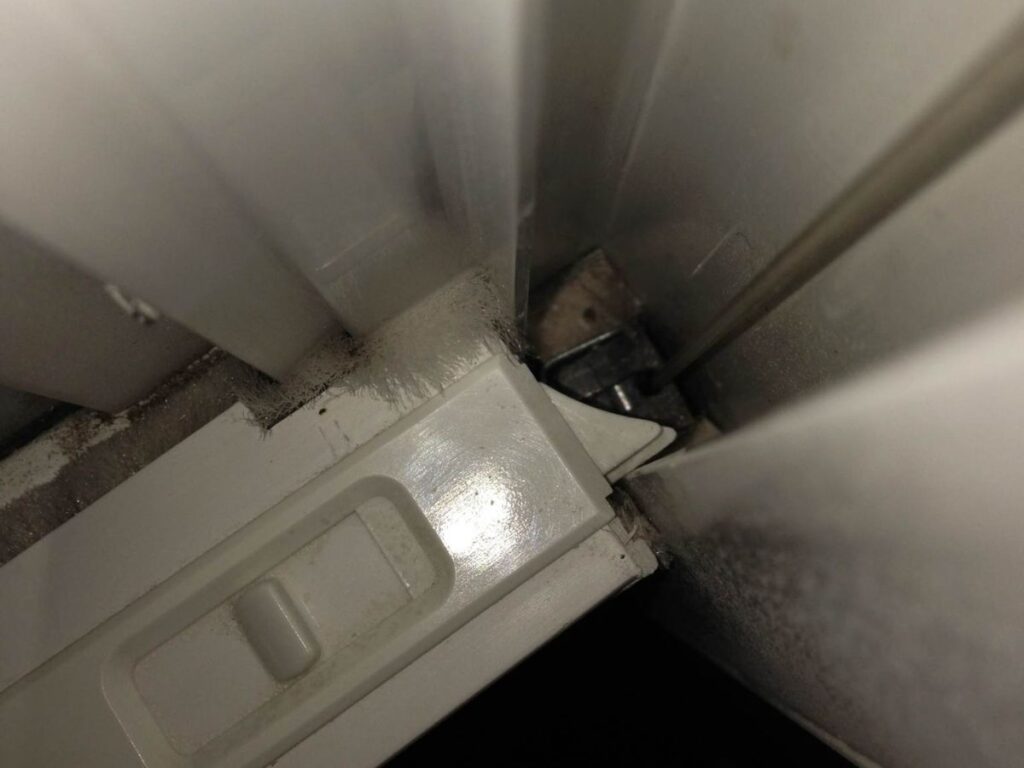
3. Cracked or Shattered Glass
A client once called us in a rush after one of their storefront windows cracked during a busy lunch hour. The glass had expanded under pressure from a poorly installed frame and snapped without warning.
Cracked glass isn’t just a safety hazard. For businesses, it’s also a security risk and a liability issue that can’t wait.
Signs You’re Dealing With Glass Damage
- Visible Cracks in the Glass Surface: These can range from hairline cracks to large splits across the panel. Some start at the edges and grow over time. Any visible crack weakens the structural integrity of the window.
- Spider-Web or Starburst Patterns: These often indicate sudden pressure or impact damage, even if no object made contact. It can be due to temperature stress or faulty installation. Once this pattern appears, replacement is your only safe option.
- Sudden Temperature-Related Cracking: If a window breaks on a hot day or after sun exposure, it’s likely from thermal stress. This is especially common in commercial buildings with tinted or reflective glass. Uneven expansion puts strain on the glass, eventually causing a break.
- Whistling or Buzzing Sounds Near Cracked Areas: A small crack might not be visible but could allow air to whistle through. You may also hear buzzing during wind gusts. These noises often precede more noticeable damage.
How to Fix or Prevent the Problem
- Replace the Damaged Glass Immediately: Even small cracks can pose a threat. We always recommend swapping the entire pane once it’s compromised. Delaying replacement increases the risk of full shatter and water intrusion.
- Use Tempered or Laminated Glass in High-Risk Zones: At Vallisco, these types of safety glass are designed to resist breakage and reduce injury if they do fail. They’re ideal for entryways, storefronts, and high-traffic areas. Laminated options also provide added sound and UV protection.
- Check for Frame Pressure or Structural Stress: Sometimes the glass breaks due to the frame being too tight or warped. Make sure the window has room to expand and contract. If not, even new glass can fail prematurely.
- Upgrade to Thermal Stress-Resistant Glass: If your building experiences big temperature swings, consider low-e or heat-strengthened glass. These are built to handle expansion better. It’s a smart long-term investment in durability and energy efficiency.
- Train Staff to Report and Log Damage Early: Small chips or cracks should be documented immediately. Waiting even a day can turn a simple fix into a replacement. We help clients create simple window checklists for their facility teams to use during rounds.

4. Windows That Won’t Open or Close Properly
One of our long-time clients had a second-floor conference room where none of the windows would budge. They thought it was a hardware issue, but when we checked it out, it turned out the frames had settled unevenly—putting pressure on the sashes and locking them in place.
Signs You’re Dealing With Operational Issues
- Window Feels Stuck or Requires Force: If you have to yank, push, or use tools just to open or shut it, something’s wrong. Over time, that extra pressure can damage frames or glass. It also signals a larger issue with fit or alignment.
- Sash Doesn’t Sit Evenly in the Frame: You might see gaps on one side while the other edge looks snug. That means the window has warped or shifted out of square. It prevents smooth movement and makes proper sealing impossible.
- Scraping or Grinding Sounds During Use: If you hear metal-on-metal or rubbing when operating the window, components are misaligned. This often results from worn tracks or shifting structures. It’s a warning sign of mechanical strain.
- Window Will Not Lock Fully: If the locking mechanism won’t engage, it’s likely because the window isn’t closing flush. This creates a security issue in addition to energy loss. It may also allow rainwater or air to slip in through gaps.
How to Fix or Prevent the Problem
- Adjust or Realign the Window Sash: Many commercial-grade windows have adjustment screws or brackets that allow realignment. A quick tune-up often solves sticking or dragging. Make sure adjustments are made with proper tools to avoid over-tightening.
- Check and Lubricate Moving Parts: Dry tracks, rusted rollers, or clogged hinges can jam up even new windows. Use silicone-based lubricants on clean hardware. We advise routine checks at least twice a year in high-use areas.
- Inspect for Frame Warping or Building Settlement: If the structure has shifted, the window might not sit square anymore. This affects not just operation, but long-term seal integrity. In some cases, reframing or shimming may be required.
- Replace Worn or Damaged Hardware: Locks, cranks, and balance systems can wear out from repeated use. Replacing these components restores full functionality. We typically carry spares for common commercial systems to avoid delays.
- Avoid Overpainting or Blocking the Tracks: We’ve seen clients unknowingly paint over sliding areas or install blinds that jam the operation. Be sure nothing obstructs the path of the sash. Small oversights like this can turn into bigger repair calls.
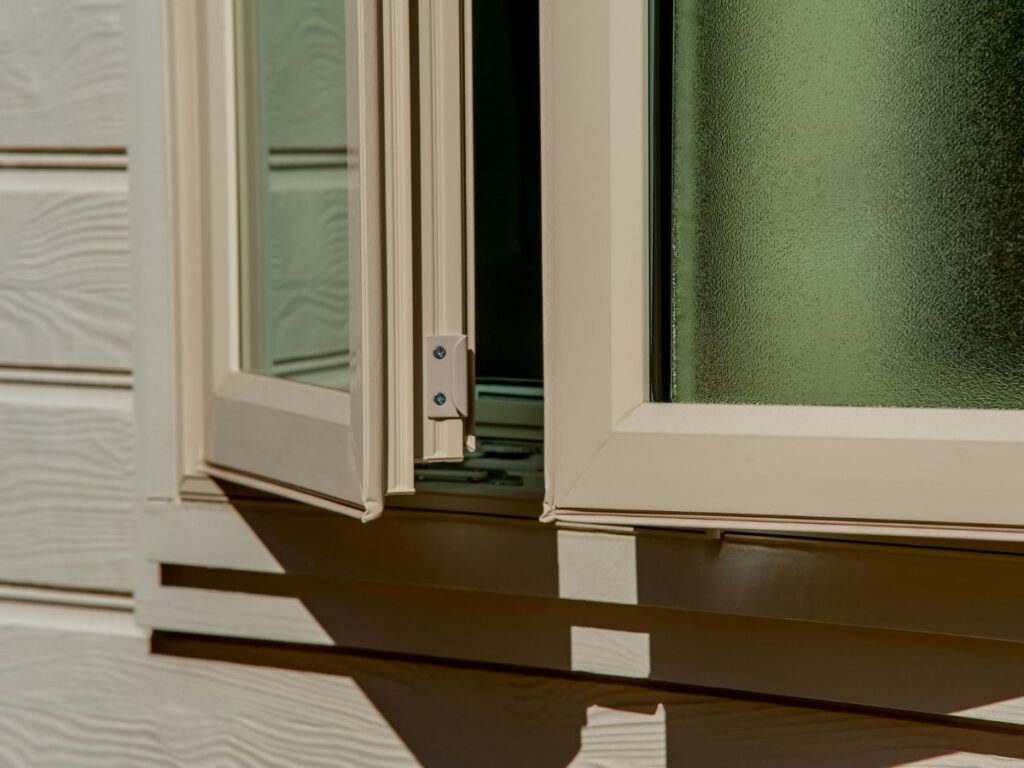
5. Water Leakage Around Frames
A retail client called us after they found water pooling on their showroom floor near the front windows. Their janitorial crew thought it came from the ceiling, but we traced it back to failed frame seals and improper weep hole drainage.
Water intrusion isn’t always obvious at first—but over time, it can rot framing, ruin drywall, and create major repair bills.
Signs You’re Dealing With Window Leaks
- Visible Water or Moisture Around the Frame: You may notice puddles on the sill or damp drywall nearby after a storm. If you touch the frame and it feels cold and wet, water is likely breaching the perimeter seal. This is especially common on older or poorly caulked frames.
- Discoloration or Stains on Walls or Ceilings: Brown marks, peeling paint, or soft drywall near window corners usually point to water entry. These signs often show up before water is seen. If left unchecked, mold can follow.
- Musty Smell Near the Window Area: Persistent dampness can lead to mildew and mold buildup behind walls. A musty odor is a hidden clue that moisture is getting inside. That smell doesn’t go away with air freshener—it means damage is underway.
- Water Coming Through During Heavy Rain or Wind: If you see dripping, streaking, or bubbling around the frame in bad weather, water’s getting in. This often means failed exterior caulking, clogged weep holes, or damaged flashing. It’s urgent to act before it worsens.
- Warped or Soft Window Frames: If the frame feels spongy or shows signs of bowing, water has been present for a while. This is common in wood or composite frames with hidden water damage. The longer it’s ignored, the more costly the fix.
How to Fix or Prevent the Problem
- Re-Caulk or Reseal the Perimeter Joints: Use a high-quality, commercial-grade sealant that can withstand movement and weather extremes. Reapplying exterior caulking can block out water effectively. It’s one of the first things we check during an inspection.
- Clear Out or Repair Weep Holes: These small drainage points at the base of the window must stay unclogged. If blocked, water builds up and leaks inside. We recommend adding this to quarterly maintenance checklists.
- Install or Repair Flashing Around the Frame: Flashing redirects water away from critical areas and helps keep moisture out. Damaged or missing flashing leaves the entire frame exposed. Retrofitting proper flashing can solve chronic leaks.
- Replace Severely Damaged Frames or Units: If the frame is warped or water-soaked, repair may not be enough. Replacing the full unit ensures structural integrity and moisture protection. It also improves insulation and performance going forward.
- Slope Exterior Surfaces Away From Windows: Water can pool at the base if sills or surrounding masonry are flat or tilted inward. Adjusting slope or adding drip caps can prevent this. It’s a small change that makes a big difference during rainstorms.
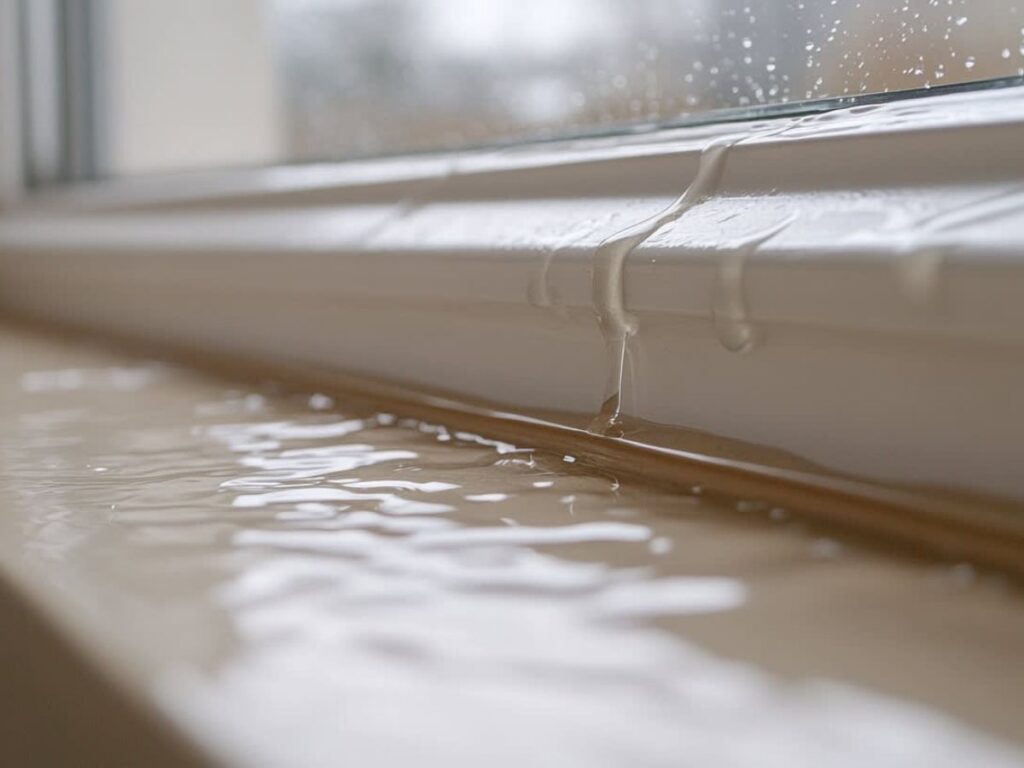
6. Excessive Noise Penetration
We had a tech startup reach out after moving into a new office by a busy intersection. They were shocked that their “commercial-grade” windows didn’t block out street noise—calls were getting interrupted, and employees couldn’t concentrate.
When outside sound creeps in, it’s more than an annoyance—it affects focus, meetings, and even your company’s image.
Signs You’re Dealing With Noise Issues
- Consistent Street or Traffic Noise Indoors: If you can clearly hear passing cars, sirens, or horns, your windows aren’t insulating sound well. This is especially common in single-pane or outdated dual-pane glass. It creates distractions throughout the workday.
- Conversations or Music Heard From Adjacent Units: In multi-tenant buildings, poor acoustic performance can let neighboring noise seep in. It’s often a sign of thin glass or improperly sealed window systems. Clients have told us it feels like “paper-thin walls.”
- Vibrating Frames During Heavy Traffic or Construction: If your windows shake or buzz when trucks roll by, that’s a red flag. This means the frames aren’t dampening vibrations. Over time, it can even loosen glazing or seals.
- Noticeable Echo or Reverb Inside the Room: When sound reflects sharply inside your space, it can make outside noise seem louder. This may point to both glass and interior acoustics. It’s especially noticeable in conference rooms or large open layouts.
How to Fix or Prevent the Problem
- Upgrade to Acoustic or Laminated Glass: These window systems are designed with soundproofing in mind. At Vallisco, laminated options have a noise-dampening layer that absorbs sound vibrations. We often spec these for buildings near roads, railways, or airports.
- Seal Air Gaps Around the Frame: Even small leaks can amplify sound transmission. Adding acoustic sealants or gaskets can make a big difference. It’s a cost-effective fix if your frames are otherwise in good shape.
- Install Secondary Glazing Systems: A second internal window layer adds another barrier against sound. This can dramatically reduce noise levels without replacing the outer window. It’s popular in retrofit projects where full replacement isn’t possible.
- Add Soundproof Window Inserts: These custom panels fit over existing glass and block out external sound. They’re ideal for tenant spaces or leased buildings. They can be removed later without altering the window system permanently.
- Choose Heavier Frame Materials: Lightweight aluminum frames tend to transmit more sound. Heavier, thermally broken systems provide better acoustic isolation. We typically guide clients toward these in urban or industrial settings.
7. Mold and Mildew Buildup
A distribution center once asked us to investigate a strong musty smell in their main breakroom. The HVAC had been cleaned, and no water leaks were obvious—but the culprit was mold growing quietly along the bottom edges of several window frames.
Mold may seem like a hygiene issue, but in a commercial setting, it’s also a health liability and compliance risk.
Signs You’re Dealing With Mold or Mildew
- Visible Black, Green, or Gray Spots Around Frames: Mold colonies usually form near lower sills, especially where condensation collects. They may appear fuzzy or flat. Once visible, they’ve likely been growing for weeks.
- Persistent Musty or Damp Odor Near Windows: Even without visible growth, mold often gives off a strong smell. This is usually the first sign teams notice. If it lingers even after cleaning, there’s likely hidden moisture involved.
- Peeling Paint or Bubbling Wall Surfaces: Moisture trapped behind walls can cause bubbling, softening, or flaking around windows. This is a secondary sign that mold may be forming beneath the surface. Ignoring it can lead to widespread drywall damage.
- Condensation That Doesn’t Evaporate Quickly: Regular moisture on glass or sills provides an ideal environment for mold. If the water lingers longer than a few minutes, it’s a sign of poor ventilation or failing insulation. That’s when mold spores start to take hold.
- Health Complaints From Staff: Symptoms like coughing, sneezing, or itchy eyes near certain rooms may signal mold exposure. If multiple people experience issues in one area, windows should be checked. Mold-related liability isn’t something any business wants to face.
How to Fix or Prevent the Problem
- Clean Affected Areas With Mold-Specific Solutions: Use EPA-registered mold removers designed for commercial use. Don’t just wipe it—kill the spores completely. Always follow safety protocols for ventilation and disposal.
- Improve Ventilation Around Window Zones: Poor airflow lets humidity settle on cold surfaces. Installing exhaust fans or opening operable windows regularly helps reduce this. We also recommend checking return vents aren’t blocked.
- Upgrade to Windows With Better Thermal Breaks: Condensation often forms when interior glass stays colder than it should. Newer window systems use thermal breaks to reduce this. That small design feature makes a big difference in mold prevention.
- Check for Hidden Water Intrusion or Leaks: Mold is often a surface symptom of a deeper moisture problem. Look behind trim, under sills, or inside drywall if the issue keeps returning. A moisture meter can help identify problem spots quickly.
- Set Up a Regular Maintenance and Inspection Schedule: Mold prevention starts with proactive checks. We advise quarterly visual inspections and fast response to any signs of moisture. Early action keeps the problem from spreading behind walls or into HVAC systems.
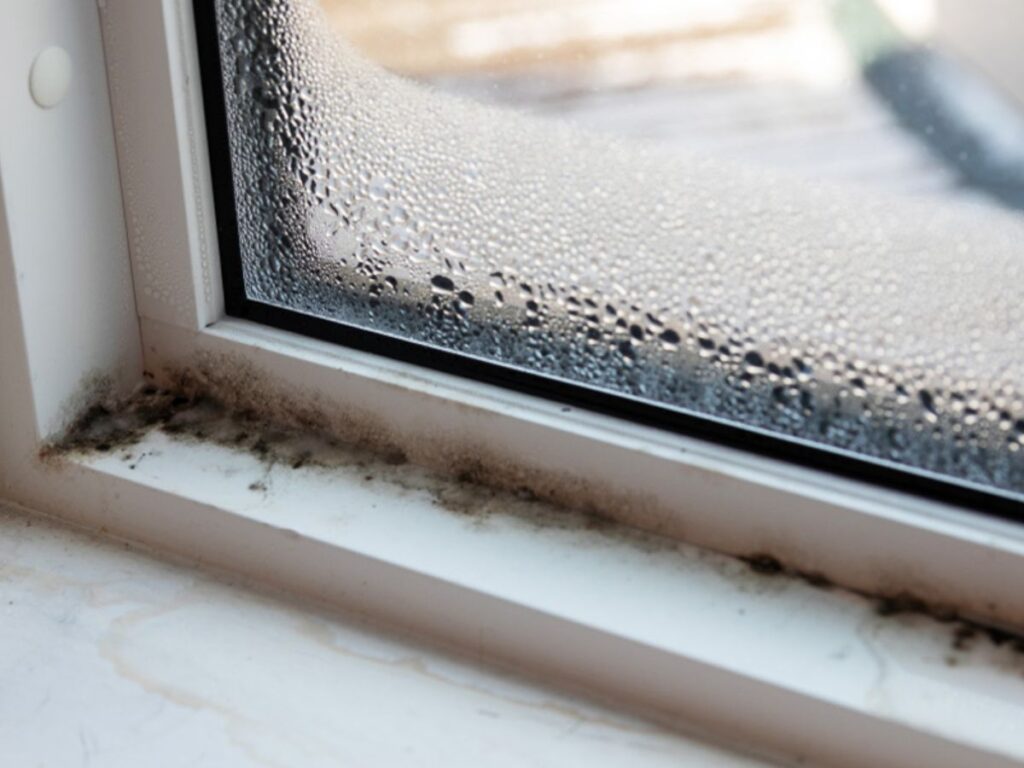
8. Hardware Malfunctions (Locks, Cranks, Handles)
A manufacturing client once had a security scare after a ground-floor window was found unlocked—even though staff swore they’d secured it. Turns out, the lock wasn’t broken; it had just worn out and no longer latched properly, even when turned.
Signs You’re Dealing With Hardware Malfunctions
- Locks That Won’t Engage or Feel Loose: If you turn the latch and it doesn’t click securely, the mechanism may be worn or misaligned. This leaves your window vulnerable, even if it looks shut. In some cases, the lock may only “feel” secure but isn’t actually engaged.
- Cranks or Handles That Stick or Slip: If your operator handles spin without moving the window—or resist movement entirely—it’s a sign of gear failure. This is common with aging crank-out systems. Eventually, the stress can break internal components.
- Windows Don’t Stay Open or Closed on Their Own: When windows fall shut or won’t stay in place, the balance system or friction hinge is likely worn out. This becomes a safety risk in high-traffic areas. Over time, slamming can also crack the glass or damage the frame.
- Rattling or Clicking Sounds During Operation: Hardware that clicks, squeaks, or rattles is usually under strain. These sounds often precede total failure. They’re also an indicator that moving parts need attention, lubrication, or replacement.
- Misaligned Handles or Latches: If the handle no longer lines up with the catch, the window may have shifted or the hardware is bent. This affects how well the unit seals and secures. It also adds stress to both the frame and lock.
How to Fix or Prevent the Problem
- Replace Worn or Broken Hardware Immediately: Don’t wait for a complete failure. Commercial window parts are usually modular, so locks, latches, and cranks can be swapped without replacing the full unit. Always use manufacturer-recommended components for long-term reliability.
- Lubricate Moving Parts on a Regular Schedule: Tracks, cranks, and hinges last longer when they’re kept clean and lubricated. Use silicone spray or dry lube rated for commercial-grade applications. We recommend doing this at least twice a year.
- Inspect for Misalignment or Warping: If the hardware doesn’t line up properly, it may be a frame issue rather than the lock itself. Realigning or adjusting the sash can often restore smooth operation. Ignoring misalignment wears out new hardware faster.
- Use Heavy-Duty or Tamper-Resistant Hardware in Vulnerable Areas: Ground-floor windows or public-facing façades benefit from reinforced components. These are built to handle higher use and attempted tampering. It’s a small investment that adds real security value.
- Keep Spare Hardware on Hand for Fast Repairs: We always advise clients to stock extra parts for their window systems—especially in large facilities. That way, when something breaks, maintenance teams can respond right away. Downtime drops, and you avoid costly rush orders.
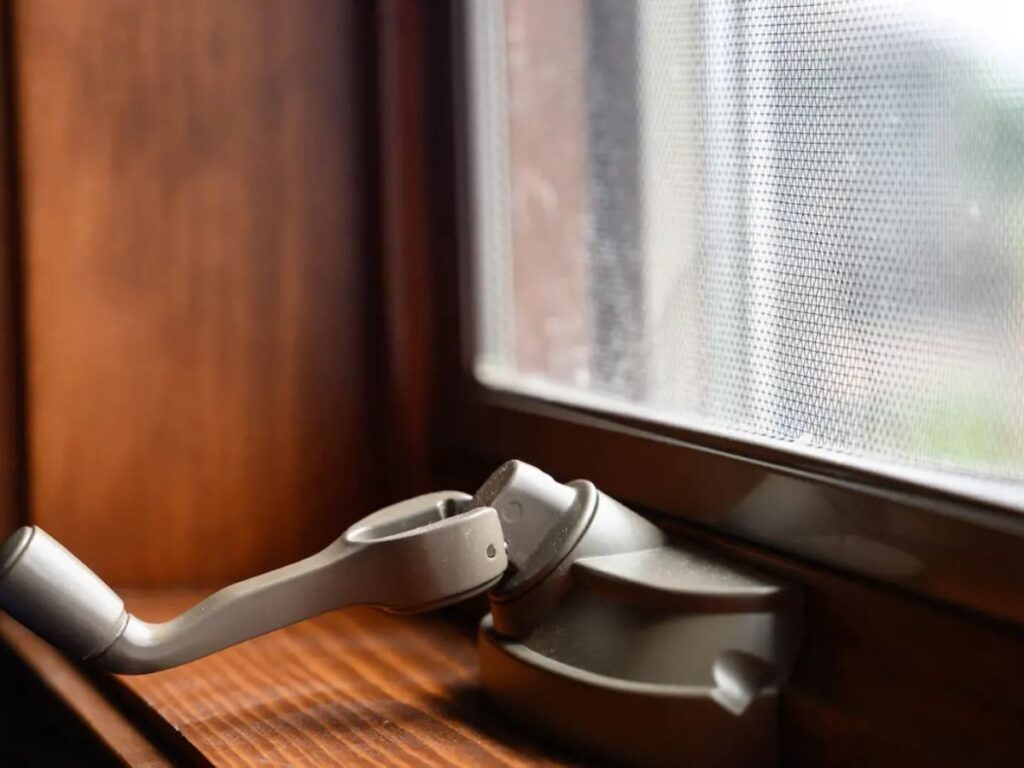
9. Poor Thermal Performance
A school district we worked with noticed major temperature differences between classrooms—even though they had the same HVAC setup. After a walkthrough, we found the issue wasn’t the heating system—it was the old, low-efficiency windows on the building’s west side.
When windows fail to regulate temperature, it impacts comfort, energy bills, and building performance across the board.
Signs You’re Dealing With Thermal Inefficiency
- Rooms That Are Always Too Hot or Too Cold: If certain areas are consistently uncomfortable, even with HVAC running, poor insulation from windows could be the cause. Glass that doesn’t block heat or cold properly puts pressure on the system. This often happens with single-pane or non-coated glass.
- High Utility Bills Without Clear Explanation: Escalating heating and cooling costs could point to energy loss through inefficient windows. If insulation and HVAC are up to date, look at the glazing next. Thermal leaks are often invisible but expensive.
- Condensation or Frost Forming Frequently: Glass that can’t regulate interior surface temperature will sweat or frost up. That signals poor thermal separation. It also creates the right environment for mold or water damage if ignored.
- Window Glass Feels Extremely Hot or Cold to the Touch: Well-insulated glass should feel neutral—extreme temps mean energy is leaking through. This is easy to test with a bare hand. If the surface feels like outdoor weather, you’ve got a thermal issue.
- HVAC Runs Constantly to Maintain Set Temperatures: Overworked systems are often trying to compensate for thermal inefficiency elsewhere. Poor windows make your equipment cycle longer and more often. That adds wear and tear—and shortens equipment life.
How to Fix or Prevent the Problem
- Upgrade to Low-E or Double/Triple Glazing Systems: These glass types reduce heat transfer significantly. They block UV and infrared rays while keeping indoor temps stable. It’s one of the most effective ways to improve comfort and efficiency.
- Install Thermally Broken Frames: These frames contain insulating barriers between inside and outside metal sections. That stops heat and cold from conducting directly through the frame. We recommend them for any building in extreme climates.
- Use Window Films or Reflective Coatings: These are quick retrofits that help reduce solar heat gain. They’re ideal for west- and south-facing windows. Though not a full replacement, they offer a temporary performance boost.
- Conduct a Professional Energy Audit: An audit pinpoints where energy is being lost—including through windows. It helps prioritize which units need replacement first. We often guide clients through this process before quoting large upgrades.
- Maintain Seals, Caulking, and Weatherstripping: Even the best glass won’t perform well if gaps around the frame allow air movement. Regularly check for dried, cracked, or missing sealants. Proper sealing supports the whole thermal envelope.
Conclusion
Every problem we’ve covered, from cracked panes to moldy sills, starts small but quickly eats into your bottom line.
The good news? You don’t have to settle for frustration or higher bills.
At Vallisco, we’ve helped businesses just like yours fix issues before they snowball into expensive repairs.
Don’t leave your comfort, safety, or energy dollars to chance. Contact us today and put our expertise to work for your facility.
Explore Related Resources
Want to see more? We’ve gathered additional product choices to give you even more variety:
Still haven’t found what you’re looking for? Don’t hesitate to contact us. We’re available around the clock to assist you.



